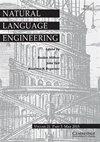Plot extraction and the visualization of narrative flow
IF 1.9
3区 计算机科学
Q3 COMPUTER SCIENCE, ARTIFICIAL INTELLIGENCE
引用次数: 0
Abstract
This article discusses the development of an automated plot extraction system for narrative texts. Acknowledging the distinction between plot, as an object of study with its own rich history and literature, and features of a text that may be automatically extractable, we begin by characterizing a text’s scatter plot of entities. This visualization of a text reveals entity density patterns characterizing the particular telling of the story under investigation and leads to effective scene partitioning. We then introduce the concept of narrative flow, a graph representation of the narrative ordering of scenes (the syuzhet) that includes how entities move through scenes from the text, and investigate the degree to which narrative flow can be automatically extracted given a glossary of plot-important objects, actors, and locations. Our subsequent analysis then explores the correlation between subjective notions of plot and the information extracted through these visualizations. In particular, we discuss narrative structures commonly found within the graphs and make comparisons with ground truth narrative flow graphs, showing mixed results highlighting the difficulty of plot extraction. However, the visual artifacts and common structural relationships seen in the graphs provide insight into narrative and its underlying plot.情节提取与叙事流的可视化
本文讨论了叙事文本自动情节提取系统的开发。作为具有丰富历史和文学的研究对象,我们认识到情节与可以自动提取的文本特征之间的区别,我们首先描述文本实体的散点图。文本的可视化揭示了实体密度模式,表征了正在调查的故事的特定讲述,并导致有效的场景划分。然后,我们引入了叙事流的概念,即场景叙事顺序的图形表示(syuzhet),其中包括实体如何从文本中穿过场景,并研究了给定情节重要对象、演员和位置的词汇表,叙事流可以自动提取的程度。我们随后的分析探讨了主观概念与通过这些可视化提取的信息之间的相关性。特别地,我们讨论了图中常见的叙事结构,并与地面真相叙事流图进行了比较,显示出复杂的结果,突出了情节提取的难度。然而,图表中的视觉人工制品和常见的结构关系提供了对叙事及其潜在情节的洞察。
本文章由计算机程序翻译,如有差异,请以英文原文为准。
求助全文
约1分钟内获得全文
求助全文
来源期刊

Natural Language Engineering
COMPUTER SCIENCE, ARTIFICIAL INTELLIGENCE-
CiteScore
5.90
自引率
12.00%
发文量
60
审稿时长
>12 weeks
期刊介绍:
Natural Language Engineering meets the needs of professionals and researchers working in all areas of computerised language processing, whether from the perspective of theoretical or descriptive linguistics, lexicology, computer science or engineering. Its aim is to bridge the gap between traditional computational linguistics research and the implementation of practical applications with potential real-world use. As well as publishing research articles on a broad range of topics - from text analysis, machine translation, information retrieval and speech analysis and generation to integrated systems and multi modal interfaces - it also publishes special issues on specific areas and technologies within these topics, an industry watch column and book reviews.
 求助内容:
求助内容: 应助结果提醒方式:
应助结果提醒方式:


